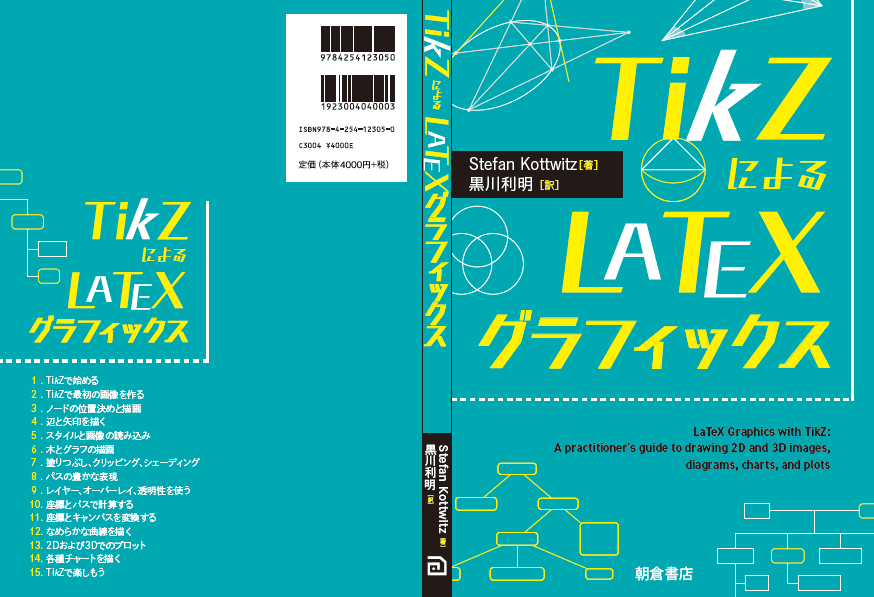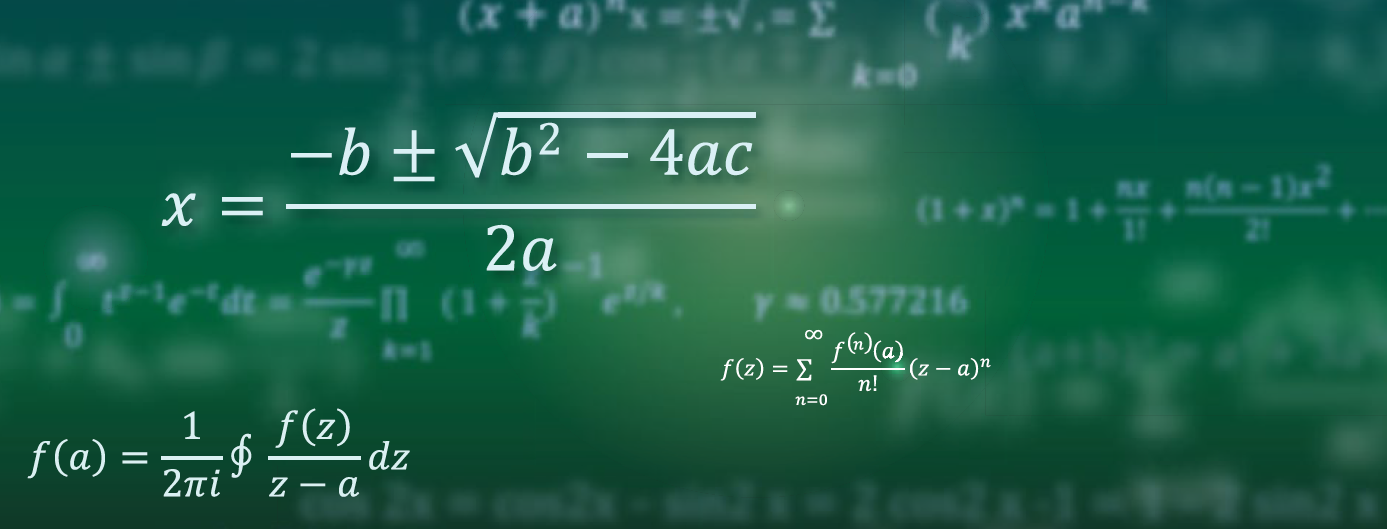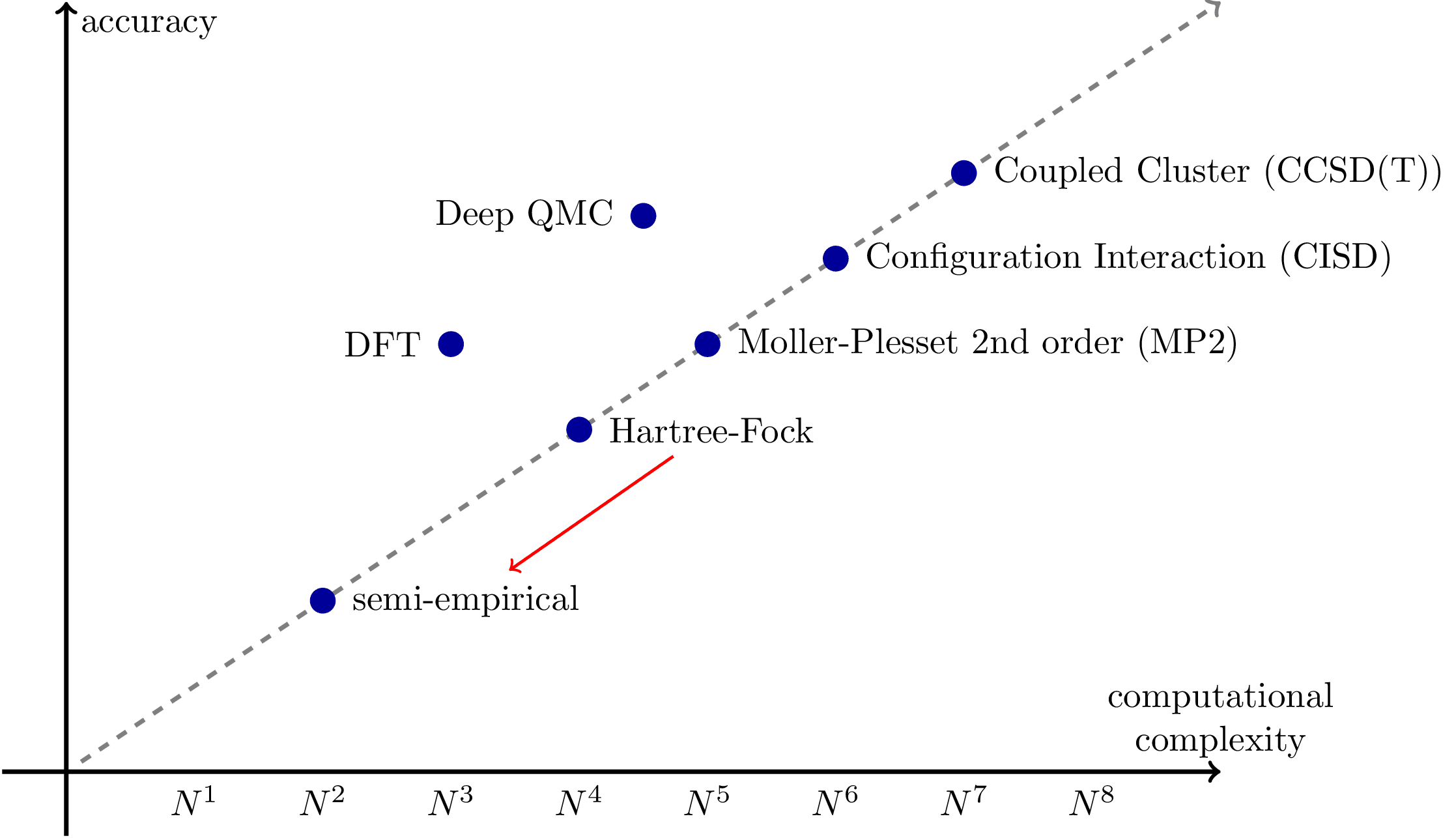Cost vs accuracy trade-off for different quantum mechanics approximations. $N$ denotes the system size, usually the number of electrons. Source: Frank Noe https://chemistryworld.com/news/quantum-chemistry-simulations-offers-beguiling-possibility-of-solving-chemistry/4011541.article
Edit and compile if you like:
% Cost vs accuracy trade-off for different quantum mechanics approximations. $N$ denotes the system size, usually the number of electrons.
% Source: Frank Noe
% https://chemistryworld.com/news/quantum-chemistry-simulations-offers-beguiling-possibility-of-solving-chemistry/4011541.article
\documentclass[tikz]{standalone}
\def\range{9}
\def\xyRatio{2/3}
\def\circSize{1mm}
\begin{document}
\begin{tikzpicture}[->, very thick, align=center, scale=1.25]
\draw (0,-0.5) -- (0,\range*\xyRatio) node[below right] {accuracy};
\draw (-0.5,0) -- (\range,0) node[above] {computational\\complexity};
\foreach \n in {1,...,8}
\node[below] at (\n,0) {$N^\n$};
\draw[dashed, gray, shorten <=5] (0,0) -- (\range,\range*\xyRatio);
\foreach \n/\name/\abbr in {2/semi-empirical/SE, 4/Hartree-Fock/HF, 5/Moller-Plesset 2nd order (MP2)/MP2, 6/Configuration Interaction (CISD)/CISD, 7/Coupled Cluster (CCSD(T))/CCSD(T)}
\fill[blue!60!black] (\n,\xyRatio*\n) circle (\circSize) node[right=1ex, black] (\abbr) {\name};
\draw[red, thick] (HF) -- (SE);
\fill[blue!60!black] (3,5*\xyRatio) circle (\circSize) node[left=1ex, black] {DFT};
\fill[blue!60!black] (4.5,6.5*\xyRatio) circle (\circSize) node[left=1ex, black] {Deep QMC};
\end{tikzpicture}
\end{document}
Click to download: qm-cost-vs-acc.tex
Open in Overleaf: qm-cost-vs-acc.tex
This file is available on tikz.netlify.app and on GitHub and is MIT licensed.
See more on the author page of Janosh Riebesell..


